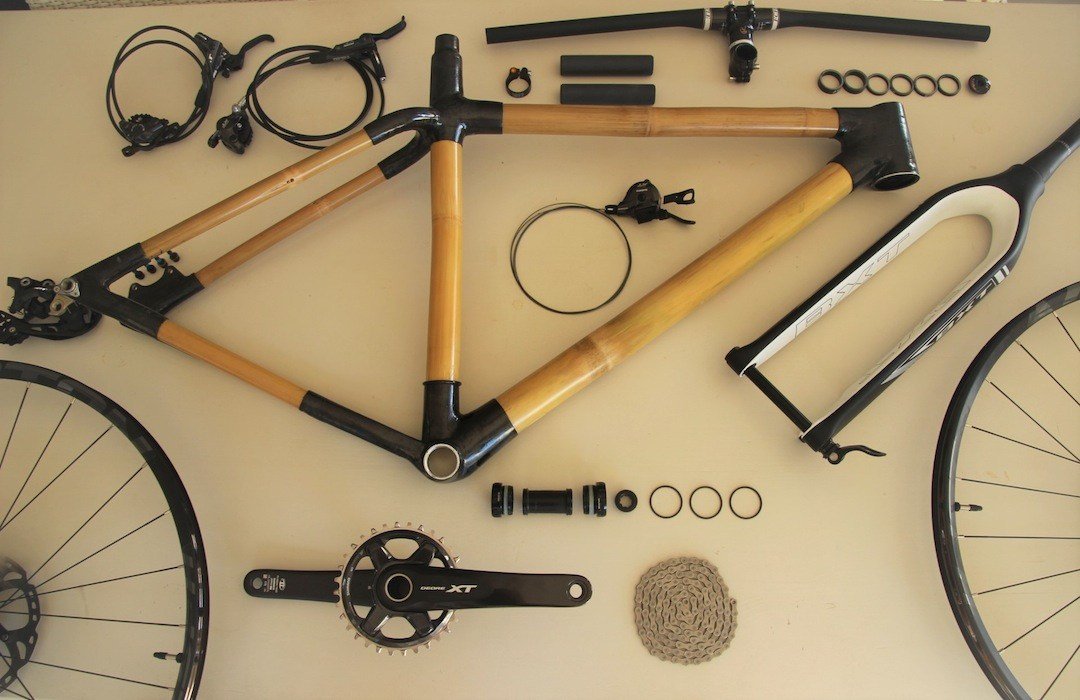Nature's Steel: How (and Why) to Make a Bamboo Bike in Beijing
In many ways, Beijing is my dream city. I’d always wanted to live somewhere that young and the old alike flooded the streets on their bicycles, headed everywhere and nowhere in particular. Then I came to Beijing and that little dream was realized: not only do many people cycle, but I also have my pick of short-term bike rental services that cost a pittance. I cannot, however, say that the bike-sharing scene is perfect: bikes often litter street corners in various states of disrepair, with the companies that put them there (ahem, Ofo) going out of business without any recourse for the waste that they have created.
Of course, the alternative to renting sometimes unreliable public share bikes is buying your own, and thanks to a long history of cycling, the Chinese bicycle industry is booming. As such, discerning customers these days look for more than just a good value for money when it comes to buying a set of wheels. The ethics behind what’s on offer, and the materials used to make them, are now also coming into play. In light of this, some innovative minds across the globe have taken it upon themselves to not only reinvent production, but also the materials used in the production of quality bikes.
One such innovator is Jing Chuanhua, who also goes by Ginger. After living in Beijing for over 20 years and working as a computer programming lecturer, Ginger decided to seek out a new path in life that combined his passion for bicycles with a quality and unique product. At his workshop in Beijing, he creates bamboo bikes, teaches the next generation of riders how to make them themselves, and reminisces on his youthful triumph of cycling from his hometown of Xi'an to Beijing in 11 days.

What is your history with bikes and biking in general?
When I was a college student, I rode a bike from Xi’an to Beijing and it took all of 11 days to complete the journey. That was my first long-distance riding experience. I also like to ride a bike which I suppose is rather obvious [laughs].
How did you get the idea to make bikes using bamboo?
Bamboo is nature’s steel and a wonderful eco-friendly material. It is especially meaningful in China where bamboo has long been a part of our culture. Bamboo is widely planted in the south of China and grows fast and is very cheap to produce. It’s an ideal substitute for steel and wood in many cases, and given the current global climate crisis, it is worth considering further.

What is the creative process? How do you come up with your bike frame designs?
You need six steps to complete a bamboo bicycle. The two key steps include fixing the frame and completing the jig, followed by reinforcing the joints with carbon fiber.
What sort of clients do you target with your bike creations?
My clients are people from all walks of life and not just students. At my workshop, I encourage everyone to make their own bicycles. It is a wonderful experience. You will "ride with pride" when you build your own bamboo bicycle.

What is your goal with creating these bamboo bikes?
My main goal is to show the versatility of bamboo as a material for bike-making. At my workshop, there is a wide variety of bikes which would be surprising to some. And that is what I wish to show. The experience of riding on a bamboo bike is like no other and it is something everyone must experience.
How can people purchase your bikes or learn how to assemble a bamboo bike for themselves?
It’s quite simple. If you are interested in learning how to assemble a bamboo bike then you can just come to my workshop and learn in person. Alternatively, you can visit my website, purchase a kit, and assemble it. My website is www.mybikediy.com.
READ: 10 Easy Rides You Can Do Without Leaving Beijing
This article originally appeared on our sister site beijingkids.
Photos courtesy of Jing Chuanhuau







